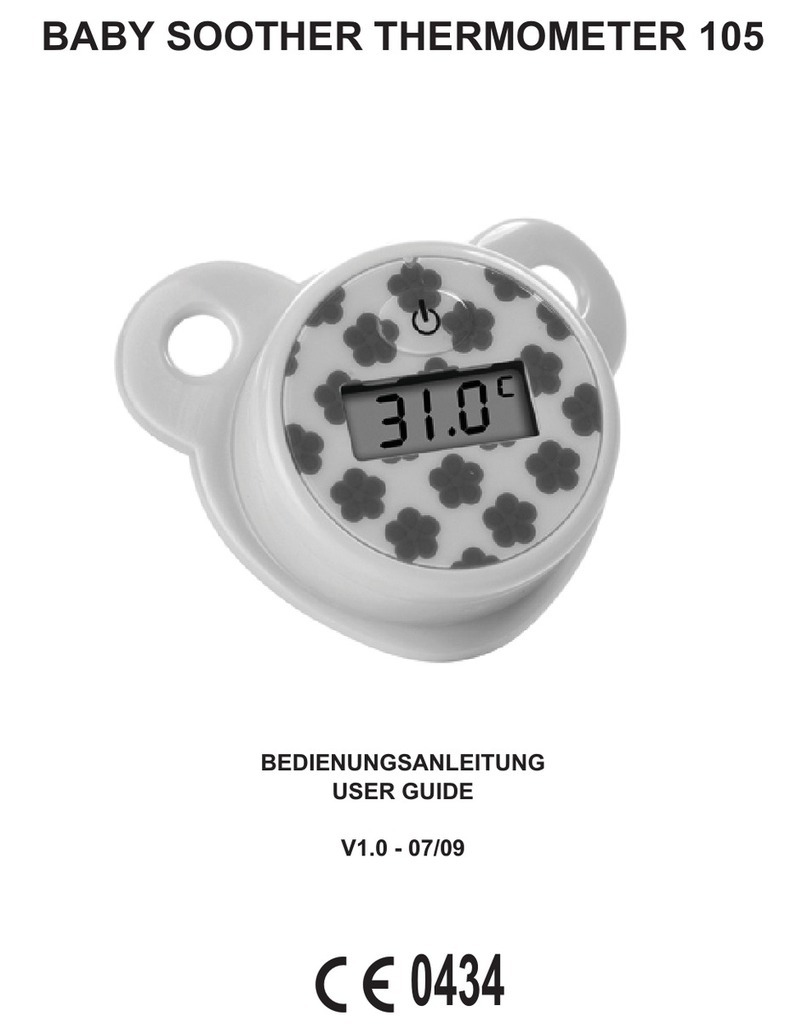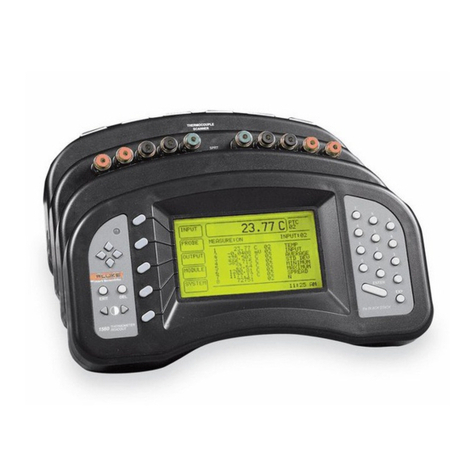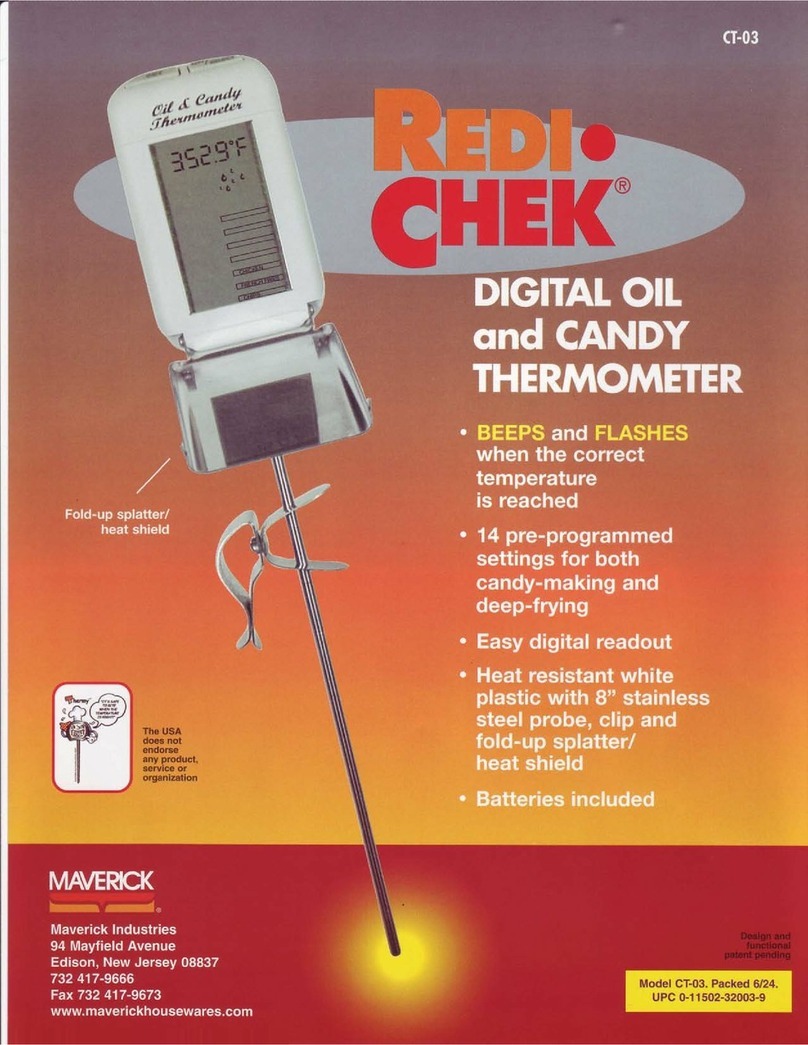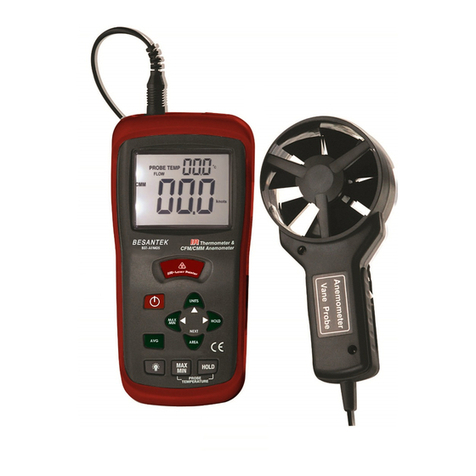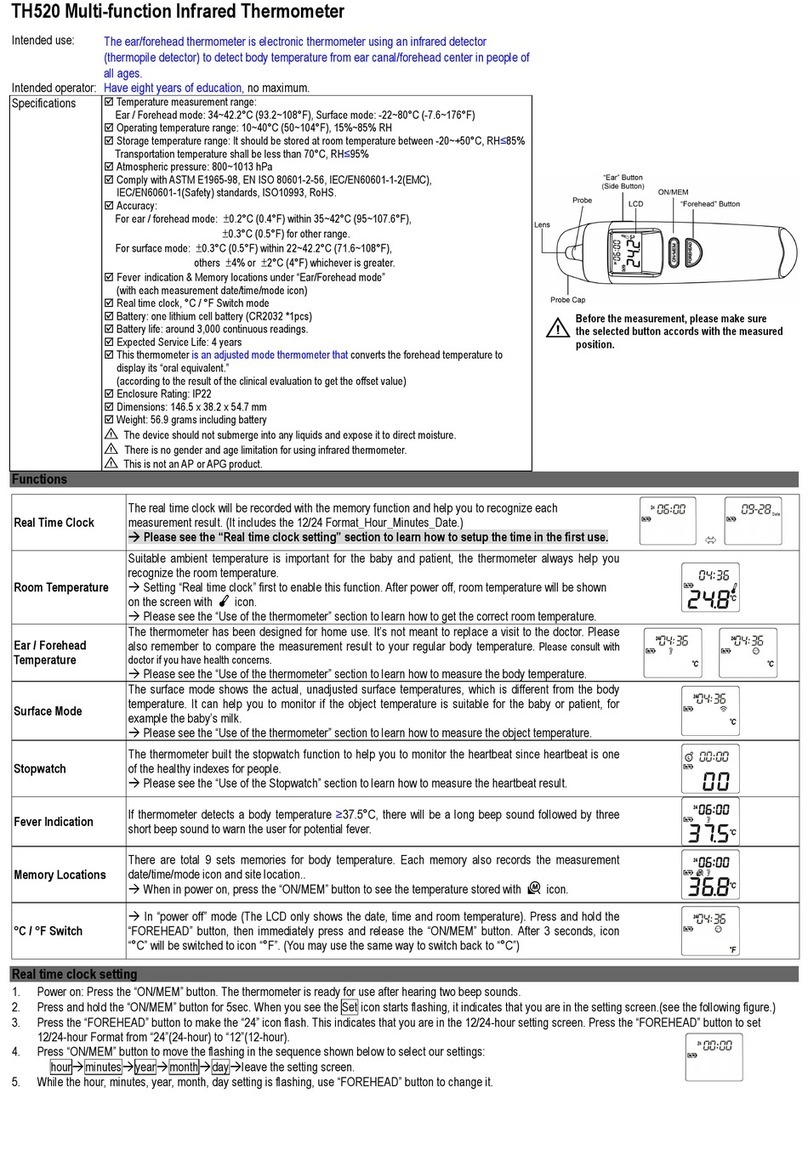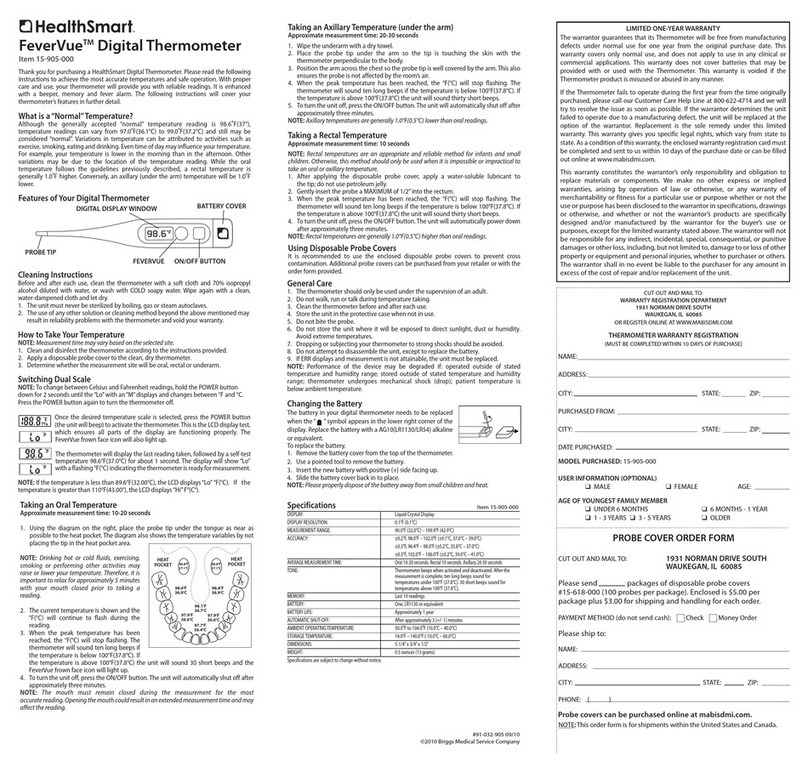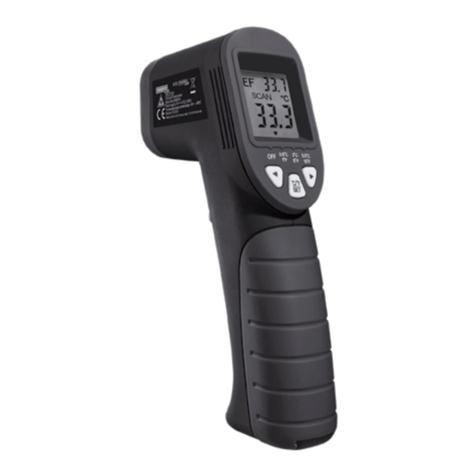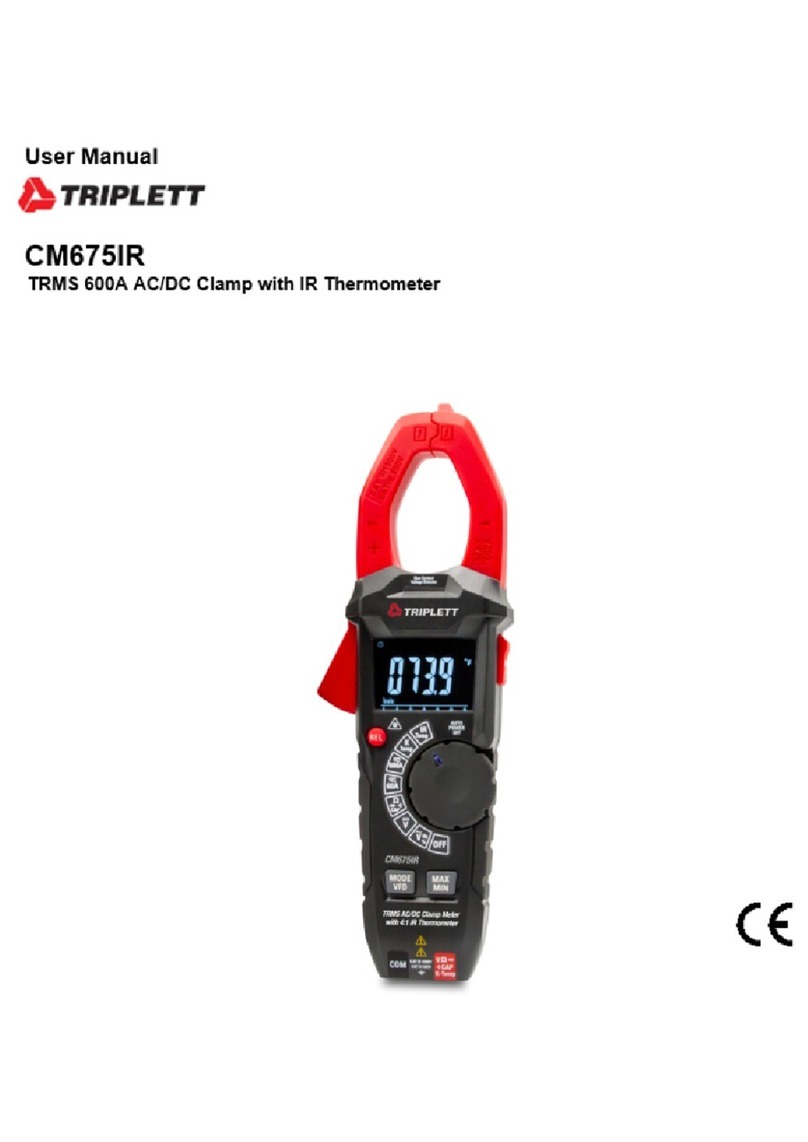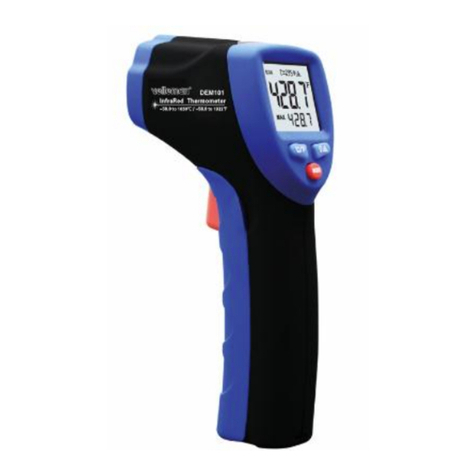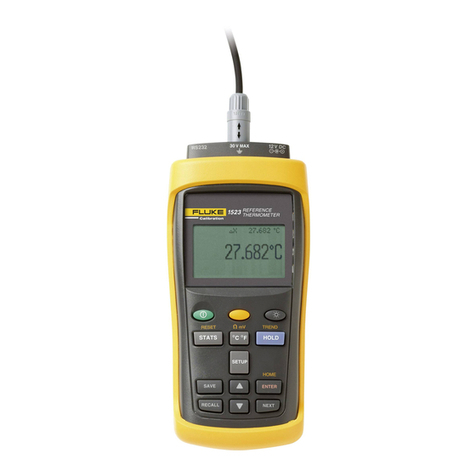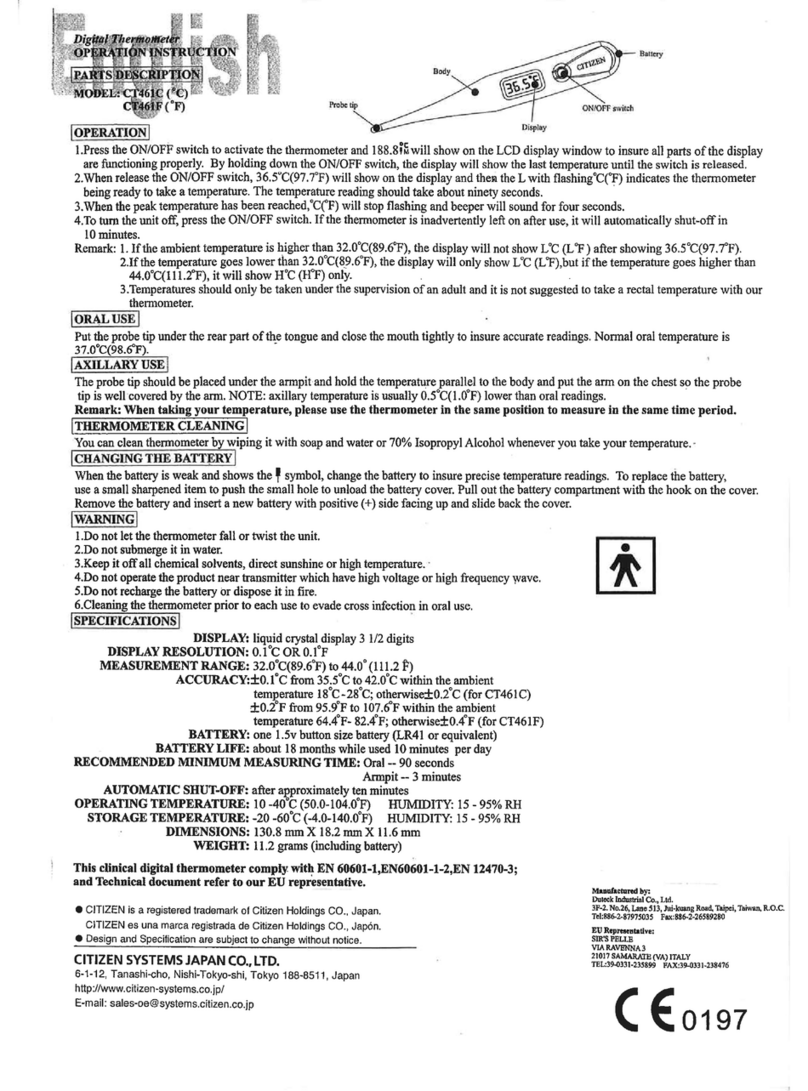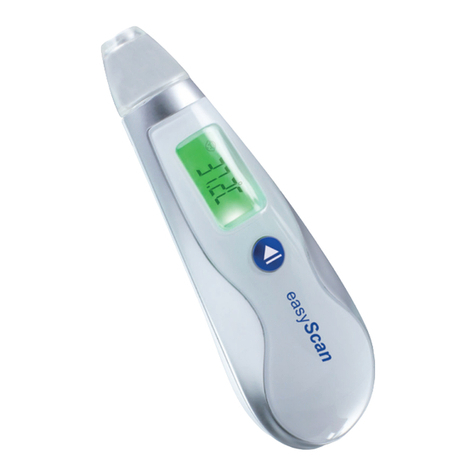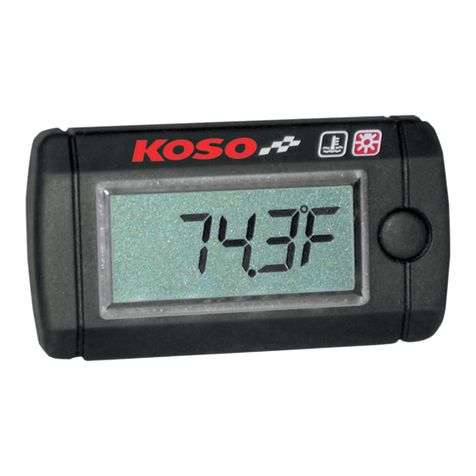Newport Electronics 205-TC User manual

M1189/ /0605 11231ML-02 Rev. E
For immediate technical or application assistance please call:
ewport Electronics, Inc.
2229 South Yale Street • Santa Ana, CA • 92704 • U.S.A.
TEL: (714) 540-4914 • FAX: (203) 968-7311
Toll Free: 1-800-639-7678 • www.newportUS.com • e-mail:[email protected]
ISO 9001 Certified
ewport Technologies, Inc.
976 Bergar • Laval (Quebec) • H7L 5A1 • Canada
TEL: (514) 335-3183 • FAX: (514) 856-6886
Toll Free: 1-800-639-7678 • www.newport.ca • e-mail:[email protected]
ewport Electronics, Ltd.
One Omega Drive • River Bend Technology Centre
orthbank, Irlam • Manchester M44 5BD • United Kingdom
Tel: +44 161 777 6611 • FAX: +44 161 777 6622
Toll Free: 0800 488 488 • www.newportuk.co.uk • e-mail:[email protected]
ewport Electronics B.V.
Postbus 8034 • 1180 LA Amstelveen • The etherlands
TEL: +31 20 3472121 • FAX: +31 20 6434643
Toll Free: 0800 0993344 • www.newport.nl • e-mail: [email protected]
ewport Electronics spol s.r.o.
Frystatska 184, 733 01 Karviná • Czech Republic
TEL: +420 59 6311899 • FAX: +420 59 6311114
Toll Free: 0800-1-66342 • www.newport.cz • e-mail: [email protected]
ewport Electronics GmbH
Daimlerstrasse 26 • D-75392 Deckenpfronn • Germany
TEL: 49 7056 9398-0 • FAX: 49 7056 9398-29
Toll Free: 0800 / 6397678 • www.newport.de • e-mail: [email protected]
ewport Electronique S.A.R.L.
11, rue Jacques Cartier • 78280 Guyancourt • France
TEL: +33 1 61 37 29 00 • FAX: +33 1 30 57 54 27
Toll Free: 0800 466 342 • www.newport.fr • e-mail: [email protected]
Mexico and Latin America
FAX: 001 (203) 359-7807
En Español: 001 (203) 359-7803
®
205-TC
THERMOCOUPLE
MINIATURE PANEL THERMOMETER
Operator’s Manual
NEWPORT
Electronics, Inc.
M1189/ /0605 11231ML-02 Rev. E
For immediate technical or application assistance please call:
ewport Electronics, Inc.
2229 South Yale Street • Santa Ana, CA • 92704 • U.S.A.
TEL: (714) 540-4914 • FAX: (203) 968-7311
Toll Free: 1-800-639-7678 • www.newportUS.com • e-mail:[email protected]
ISO 9001 Certified
ewport Technologies, Inc.
976 Bergar • Laval (Quebec) • H7L 5A1 • Canada
TEL: (514) 335-3183 • FAX: (514) 856-6886
Toll Free: 1-800-639-7678 • www.newport.ca • e-mail:[email protected]
ewport Electronics, Ltd.
One Omega Drive • River Bend Technology Centre
orthbank, Irlam • Manchester M44 5BD • United Kingdom
Tel: +44 161 777 6611 • FAX: +44 161 777 6622
Toll Free: 0800 488 488 • www.newportuk.co.uk • e-mail:[email protected]
ewport Electronics B.V.
Postbus 8034 • 1180 LA Amstelveen • The etherlands
TEL: +31 20 3472121 • FAX: +31 20 6434643
Toll Free: 0800 0993344 • www.newport.nl • e-mail: [email protected]
ewport Electronics spol s.r.o.
Frystatska 184, 733 01 Karviná • Czech Republic
TEL: +420 59 6311899 • FAX: +420 59 6311114
Toll Free: 0800-1-66342 • www.newport.cz • e-mail: [email protected]
ewport Electronics GmbH
Daimlerstrasse 26 • D-75392 Deckenpfronn • Germany
TEL: 49 7056 9398-0 • FAX: 49 7056 9398-29
Toll Free: 0800 / 6397678 • www.newport.de • e-mail: [email protected]
ewport Electronique S.A.R.L.
11, rue Jacques Cartier • 78280 Guyancourt • France
TEL: +33 1 61 37 29 00 • FAX: +33 1 30 57 54 27
Toll Free: 0800 466 342 • www.newport.fr • e-mail: [email protected]
Mexico and Latin America
FAX: 001 (203) 359-7807
En Español: 001 (203) 359-7803
®
205-TC
THERMOCOUPLE
MINIATURE PANEL THERMOMETER
Operator’s Manual
NEWPORT
Electronics, Inc.

Counters
Frequency Meters
PID Controllers
Clock/Timers
Printers
Process Meters
On/Off
Controllers
Recorders
Relative
Humidity
Transmitters
Thermocouples
Thermistors
Wire
Rate Meters
Timers
Totalizers
Strain Gauge
Meters
Voltmeters
Multimeters
Soldering Iron
Testers
pH pens
pH Controllers
pH Electrodes
RTDs
Thermowells
Flow Sensors
For Immediate Assistance
In the U.S.A. and Canada: 1-800- EWPORT
®
In Mexico: (95) 800- EWPORT
SM
Or call your local EWPORT Office.
It is the policy of EWPORT to comply with all worldwide safety and EMC/EMI regulations that apply. EWPORT is constantly pursuing
certification of its products to the European ew Approach Directives. EWPORT will add the CE mark to every appropriate device upon
certification.
The information contained in this document is believed to be correct but EWPORT Electronics, Inc. accepts no liability for any errors it
contains, and reserves the right to alter specifications without notice.
WARNING: These products are not designed for use in, and should not be used for, patient connected applications.
TRADEMARK NOTICE:
a
®
,
,
,
newportUS.com, , ,
and the “Meter
Case Bezel Design”
are trademarks of EWPORT Electronics, Inc.
PATENT NOTICE: This product is covered by one or more of the following patents: U.S. Pat. o. Des. 336,895; 5,274,577 / Canada 2052599;
2052600 / Italy 1249456; 1250938 / France Brevet o. 91 12756 / Spain 2039150; 2048066 / UK Patent o. GB2 249 837; GB2 248 954 /
Germany DE 41 34398 C2. Other US and International Patents Pending.
NEWPORT
®
NEWPORT
®
Internet e-mail
Additional products from
NEWPORTnetSM On-Line Service
http://www.newportUS.com
This device is marked with the international caution symbol. It is important to read the Setup Guide before installing or commissioning
this device as it contains important information relating to safety and EMC.
NEWPORT
Electronics, Inc.
Warranty/Disclaimer
EWPORT Electronics, Inc. warrants this unit to be free of defects in materials and workmanship for a period of one
(1) year from the date of purchase. In addition to EWPORT’s standard warranty period, EWPORT Electronics will
extend the warranty period for one (1) additional year if the warranty card enclosed with each instrument is returned
to EWPORT.
If the unit should malfunction, it must be returned to the factory for evaluation. EWPORT’s Customer Service
Department will issue an Authorized Return (AR) number immediately upon phone or written request. Upon
examination by EWPORT, if the unit is found to be defective it will be repaired or replaced at no charge.
EWPORT’s WARRA TY does not apply to defects resulting from any action of the purchaser, including but not
limited to mishandling, improper interfacing, operation outside of design limits, improper repair, or unauthorized
modification. This WARRA TY is VOID if the unit shows evidence of having been tampered with or shows evidence
of being damaged as a result of excessive corrosion; or current, heat, moisture or vibration; improper specification;
misapplication; misuse or other operating conditions outside of EWPORT’s control. Components which wear are not
warranted, including but not limited to contact points, fuses, and triacs.
NEWPORT i plea ed to offer ugge tion on the u e of it variou product . However, NEWPORT neither
a ume re pon ibility for any omi ion or error nor a ume liability for any damage that re ult from the
u e of it product in accordance with information provided by NEWPORT, either verbal or written. NEWPORT
warrant only that the part manufactured by it will be a pecified and free of defect . NEWPORT MAKES NO
OTHER WARRANTIES OR REPRESENTATIONS OF ANY KIND WHATSOEVER, EXPRESSED OR IMPLIED,
EXCEPT THAT OF TITLE, AND ALL IMPLIED WARRANTIES INCLUDING ANY WARRANTY OF
MERCHANTABILITY AND FITNESS FOR A PARTICULAR PURPOSE ARE HEREBY DISCLAIMED. LIMITATION
OF LIABILITY: The remedie of purcha er et forth herein are exclu ive and the total liability of NEWPORT
with re pect to thi order, whether ba ed on contract, warranty, negligence, indemnification, trict liability or
otherwi e, hall not exceed the purcha e price of the component upon which liability i ba ed. In no event
hall NEWPORT be liable for con equential, incidental or pecial damage .
CO DITIO S: Equipment sold by EWPORT is not intended to be used, nor shall it be used: (1) as a “Basic
Component” under 10 CFR 21 ( RC), used in or with any nuclear installation or activity; or (2) in medical applications
or used on humans. Should any Product(s) be used in or with any nuclear installation or activity, medical application,
or used on humans, or misused in any way, EWPORT assumes no responsibility as set forth in our basic
WARRA TY / DISCLAIMER language, and additionally purchaser will indemnify EWPORT and hold EWPORT
harmless from any liability or damage whatsoever arising out of the use of the Product(s) in such a manner.
Direct all warranty and repair requests/inquiries to the EWPORT Customer Service
Department. BEFORE RETUR I G A Y PRODUCT(S) TO EWPORT, PURCHASER MUST
OBTAI A AUTHORIZED RETUR (AR) UMBER FROM EWPORT’S CUSTOMER
SERVICE DEPARTME T (I ORDER TO AVOID PROCESSI G DELAYS). The assigned AR
number should then be marked on the outside of the return package and on any
correspondence.
The purchaser is responsible for shipping charges, freight, insurance and proper packaging to
prevent breakage in transit.
FOR WARRANTY RETUR S, please
have the following information available
BEFORE
contacting EWPORT:
1. P.O. number under which the product
was PURCHASED,
2. Model and serial number of the product
under warranty, and
3. Repair instructions and/or specific
problems relative to the product.
FOR NON-WARRANTY REPAIRS, consult
EWPORT for current repair charges. Have the
following information available BEFORE
contacting EWPORT:
1. P.O. number to cover the COST of
the repair,
2. Model and serial number of product, and
3. Repair instructions and/or specific problems
relative to the product.
EWPORT’s policy is to make running changes, not model changes, whenever an improvement is possible. This
affords our customers the latest in technology and engineering.
EWPORT is a registered trademark of EWPORT Electronics, Inc.
© Copyright 2003 EWPORT Electronics, Inc. All rights reserved. This document may not be copied,
photocopied, reproduced, translated, or reduced to any electronic medium or machine-readable form, in whole or in
part, without prior written consent of EWPORT Electronics, Inc.
Return Requests/Inquiries
Counters
Frequency Meters
PID Controllers
Clock/Timers
Printers
Process Meters
On/Off
Controllers
Recorders
Relative
Humidity
Transmitters
Thermocouples
Thermistors
Wire
Rate Meters
Timers
Totalizers
Strain Gauge
Meters
Voltmeters
Multimeters
Soldering Iron
Testers
pH pens
pH Controllers
pH Electrodes
RTDs
Thermowells
Flow Sensors
For Immediate Assistance
In the U.S.A. and Canada: 1-800- EWPORT
®
In Mexico: (95) 800- EWPORT
SM
Or call your local EWPORT Office.
It is the policy of EWPORT to comply with all worldwide safety and EMC/EMI regulations that apply. EWPORT is constantly pursuing
certification of its products to the European ew Approach Directives. EWPORT will add the CE mark to every appropriate device upon
certification.
The information contained in this document is believed to be correct but EWPORT Electronics, Inc. accepts no liability for any errors it
contains, and reserves the right to alter specifications without notice.
WARNING: These products are not designed for use in, and should not be used for, patient connected applications.
TRADEMARK NOTICE:
a
®
,
,
,
newportUS.com, , ,
and the “Meter
Case Bezel Design”
are trademarks of EWPORT Electronics, Inc.
PATENT NOTICE: This product is covered by one or more of the following patents: U.S. Pat. o. Des. 336,895; 5,274,577 / Canada 2052599;
2052600 / Italy 1249456; 1250938 / France Brevet o. 91 12756 / Spain 2039150; 2048066 / UK Patent o. GB2 249 837; GB2 248 954 /
Germany DE 41 34398 C2. Other US and International Patents Pending.
NEWPORT
®
NEWPORT
®
Internet e-mail
Additional products from
NEWPORTnetSM On-Line Service
http://www.newportUS.com
This device is marked with the international caution symbol. It is important to read the Setup Guide before installing or commissioning
this device as it contains important information relating to safety and EMC.
NEWPORT
Electronics, Inc.
Warranty/Disclaimer
EWPORT Electronics, Inc. warrants this unit to be free of defects in materials and workmanship for a period of one
(1) year from the date of purchase. In addition to EWPORT’s standard warranty period, EWPORT Electronics will
extend the warranty period for one (1) additional year if the warranty card enclosed with each instrument is returned
to EWPORT.
If the unit should malfunction, it must be returned to the factory for evaluation. EWPORT’s Customer Service
Department will issue an Authorized Return (AR) number immediately upon phone or written request. Upon
examination by EWPORT, if the unit is found to be defective it will be repaired or replaced at no charge.
EWPORT’s WARRA TY does not apply to defects resulting from any action of the purchaser, including but not
limited to mishandling, improper interfacing, operation outside of design limits, improper repair, or unauthorized
modification. This WARRA TY is VOID if the unit shows evidence of having been tampered with or shows evidence
of being damaged as a result of excessive corrosion; or current, heat, moisture or vibration; improper specification;
misapplication; misuse or other operating conditions outside of EWPORT’s control. Components which wear are not
warranted, including but not limited to contact points, fuses, and triacs.
NEWPORT i plea ed to offer ugge tion on the u e of it variou product . However, NEWPORT neither
a ume re pon ibility for any omi ion or error nor a ume liability for any damage that re ult from the
u e of it product in accordance with information provided by NEWPORT, either verbal or written. NEWPORT
warrant only that the part manufactured by it will be a pecified and free of defect . NEWPORT MAKES NO
OTHER WARRANTIES OR REPRESENTATIONS OF ANY KIND WHATSOEVER, EXPRESSED OR IMPLIED,
EXCEPT THAT OF TITLE, AND ALL IMPLIED WARRANTIES INCLUDING ANY WARRANTY OF
MERCHANTABILITY AND FITNESS FOR A PARTICULAR PURPOSE ARE HEREBY DISCLAIMED. LIMITATION
OF LIABILITY: The remedie of purcha er et forth herein are exclu ive and the total liability of NEWPORT
with re pect to thi order, whether ba ed on contract, warranty, negligence, indemnification, trict liability or
otherwi e, hall not exceed the purcha e price of the component upon which liability i ba ed. In no event
hall NEWPORT be liable for con equential, incidental or pecial damage .
CO DITIO S: Equipment sold by EWPORT is not intended to be used, nor shall it be used: (1) as a “Basic
Component” under 10 CFR 21 ( RC), used in or with any nuclear installation or activity; or (2) in medical applications
or used on humans. Should any Product(s) be used in or with any nuclear installation or activity, medical application,
or used on humans, or misused in any way, EWPORT assumes no responsibility as set forth in our basic
WARRA TY / DISCLAIMER language, and additionally purchaser will indemnify EWPORT and hold EWPORT
harmless from any liability or damage whatsoever arising out of the use of the Product(s) in such a manner.
Direct all warranty and repair requests/inquiries to the EWPORT Customer Service
Department. BEFORE RETUR I G A Y PRODUCT(S) TO EWPORT, PURCHASER MUST
OBTAI A AUTHORIZED RETUR (AR) UMBER FROM EWPORT’S CUSTOMER
SERVICE DEPARTME T (I ORDER TO AVOID PROCESSI G DELAYS). The assigned AR
number should then be marked on the outside of the return package and on any
correspondence.
The purchaser is responsible for shipping charges, freight, insurance and proper packaging to
prevent breakage in transit.
FOR WARRANTY RETUR S, please
have the following information available
BEFORE
contacting EWPORT:
1. P.O. number under which the product
was PURCHASED,
2. Model and serial number of the product
under warranty, and
3. Repair instructions and/or specific
problems relative to the product.
FOR NON-WARRANTY REPAIRS, consult
EWPORT for current repair charges. Have the
following information available BEFORE
contacting EWPORT:
1. P.O. number to cover the COST of
the repair,
2. Model and serial number of product, and
3. Repair instructions and/or specific problems
relative to the product.
EWPORT’s policy is to make running changes, not model changes, whenever an improvement is possible. This
affords our customers the latest in technology and engineering.
EWPORT is a registered trademark of EWPORT Electronics, Inc.
© Copyright 2003 EWPORT Electronics, Inc. All rights reserved. This document may not be copied,
photocopied, reproduced, translated, or reduced to any electronic medium or machine-readable form, in whole or in
part, without prior written consent of EWPORT Electronics, Inc.
Return Requests/Inquiries

TTAABBLLEEOOFFCCOONNTTEENNTTSS
SSEECCTTIIOONNPPAAGGEE
Preface . . . . . . . . . . . . . . . . . . . . . . . . . . . . . . . . .ii
Models Available . . . . . . . . . . . . . . . . . . . . . . . . . .iii
Section 1 Introduction . . . . . . . . . . . . . . . . . . . . . . . . . . . . . .1
1.1 Unpacking . . . . . . . . . . . . . . . . . . . . . . . . . . . . . . .1
1.2 Safety Considerations . . . . . . . . . . . . . . . . . . . . . .2
Section 2 About the Meter . . . . . . . . . . . . . . . . . . . . . . . . . . .3
2.1 Front of the Meter . . . . . . . . . . . . . . . . . . . . . . . . .3
2.2 Back of the Meter . . . . . . . . . . . . . . . . . . . . . . . . .4
2.3 Description . . . . . . . . . . . . . . . . . . . . . . . . . . . . . .4
Section 3 Getting Started . . . . . . . . . . . . . . . . . . . . . . . . . . .5
3.1 Main Board Power Jumpers . . . . . . . . . . . . . . . . . .5
3.2 Converting °F to °C (vice versa) . . . . . . . . . . . . . . .7
3.3 Installation and Panel Mounting . . . . . . . . . . . . . . .8
3.4 Sensor Input Connections . . . . . . . . . . . . . . . . . .10
3.5 Analog Output Connections . . . . . . . . . . . . . . . . .12
3.6 Display Hold Connections . . . . . . . . . . . . . . . . . .13
3.7 Main Power Connections . . . . . . . . . . . . . . . . . . .14
3.8 Disassembly/Assembly . . . . . . . . . . . . . . . . . . . .16
Section 4 Operation and Calibration . . . . . . . . . . . . . . . . . .18
4.1 Equipment Required . . . . . . . . . . . . . . . . . . . . . .18
4.2 Calibration Procedure . . . . . . . . . . . . . . . . . . . . .19
Section 5 Specifications . . . . . . . . . . . . . . . . . . . . . . . . . . . .28
Section 6 Glossary . . . . . . . . . . . . . . . . . . . . . . . . . . . . . . .32
i
TTAABBLLEEOOFFCCOONNTTEENNTTSS
SSEECCTTIIOONNPPAAGGEE
Preface . . . . . . . . . . . . . . . . . . . . . . . . . . . . . . . . .ii
Models Available . . . . . . . . . . . . . . . . . . . . . . . . . .iii
Section 1 Introduction . . . . . . . . . . . . . . . . . . . . . . . . . . . . . .1
1.1 Unpacking . . . . . . . . . . . . . . . . . . . . . . . . . . . . . . .1
1.2 Safety Considerations . . . . . . . . . . . . . . . . . . . . . .2
Section 2 About the Meter . . . . . . . . . . . . . . . . . . . . . . . . . . .3
2.1 Front of the Meter . . . . . . . . . . . . . . . . . . . . . . . . .3
2.2 Back of the Meter . . . . . . . . . . . . . . . . . . . . . . . . .4
2.3 Description . . . . . . . . . . . . . . . . . . . . . . . . . . . . . .4
Section 3 Getting Started . . . . . . . . . . . . . . . . . . . . . . . . . . .5
3.1 Main Board Power Jumpers . . . . . . . . . . . . . . . . . .5
3.2 Converting °F to °C (vice versa) . . . . . . . . . . . . . . .7
3.3 Installation and Panel Mounting . . . . . . . . . . . . . . .8
3.4 Sensor Input Connections . . . . . . . . . . . . . . . . . .10
3.5 Analog Output Connections . . . . . . . . . . . . . . . . .12
3.6 Display Hold Connections . . . . . . . . . . . . . . . . . .13
3.7 Main Power Connections . . . . . . . . . . . . . . . . . . .14
3.8 Disassembly/Assembly . . . . . . . . . . . . . . . . . . . .16
Section 4 Operation and Calibration . . . . . . . . . . . . . . . . . .18
4.1 Equipment Required . . . . . . . . . . . . . . . . . . . . . .18
4.2 Calibration Procedure . . . . . . . . . . . . . . . . . . . . .19
Section 5 Specifications . . . . . . . . . . . . . . . . . . . . . . . . . . . .28
Section 6 Glossary . . . . . . . . . . . . . . . . . . . . . . . . . . . . . . .32
i

ii
PREFACE
Manual Objectives: This manual shows you how to set up and
use the Panel Thermometer.
This meter is an economical Miniature Temperature Panel
Thermometer featuring a large display with a linearized analog
output that is supplied as a standard feature.
Each of the models* can be converted by the user to display in
degrees Fahrenheit or Celsius. However, due to the internal
design of the meter, the input type and resolution CANNOT
be changed on any J, K, T, or unit.
The meter is available in many different styles. All of the
Thermocouple models listed in Table 1-1 come standard with
red LEDs, and can be ordered with a green LED display as an
option. The part numbers would include a “G”.
xample: 205-JF1,G,C0
Also, these thermocouple meters can be ordered with different
power configurations. Refer to Table 1-3 for available choices.
*Refer to Table 1-1 for the complete listing of models available.
ii
PREFACE
Manual Objectives: This manual shows you how to set up and
use the Panel Thermometer.
This meter is an economical Miniature Temperature Panel
Thermometer featuring a large display with a linearized analog
output that is supplied as a standard feature.
Each of the models* can be converted by the user to display in
degrees Fahrenheit or Celsius. However, due to the internal
design of the meter, the input type and resolution CANNOT
be changed on any J, K, T, or unit.
The meter is available in many different styles. All of the
Thermocouple models listed in Table 1-1 come standard with
red LEDs, and can be ordered with a green LED display as an
option. The part numbers would include a “G”.
xample: 205-JF1,G,C0
Also, these thermocouple meters can be ordered with different
power configurations. Refer to Table 1-3 for available choices.
*Refer to Table 1-1 for the complete listing of models available.

32
SSEECCTTIIOONN66GGLLOOSSSSAARRYY
COMMO MODE REJECTIO (CMR) - a measure of the affect
of a voltage on the indicated display. It is the ratio of the
common mode voltage to the measured voltage due to a
common mode voltage.
COMMO MODE VOLTAGE (CMV) - the average of the
voltage applied to both wires of a two wire or differential input.
ORMAL MODE REJECTIO ( MR) - a measure of the
rejection of unwanted signal due to a voltage applied between
the wires of a two wire or differential input (shown as normal
mode voltage). MR is the ratio of the normal mode voltage to
the measured voltage due to the normal mode voltage.
TEMPCO - abbreviation for temperature coefficient. It is the
effect of changes in ambient temperature on a particular
parameter, such as zero or span settings.
iii
TABLE 1-1
TTCCMMOODDEELLSSAAVVAAIILLAABBLLEE
The accuracies and ranges are listed in Section 5.
The following 3-1/2 digit mini thermocouple panel
thermometer are di cu ed in thi operator’ manual.
MODEL TYPE °C or °F RESOLUTION
205-JF1 J F 1.0°F
205-JF2 J F 0.1°F
205-JC1 J C 1.0°C
205-JC2 J C 0.1°C
205-KF1 K F 1.0°F
205-KF2 K F 0.1°F
205-KC1 K C 1.0°C
205-KC2 K C 0.1°C
205-TF1 T F 1.0°F
205-TF2 T F 0.1°F
205-TC1 T C 1.0°C
205-TC2 T C 0.1°C
205-EF1 E F 1.0°F
205-EF2 E F 0.1°F
205-EC1 E C 1.0°C
205-EC2 E C 0.1°C
32
SSEECCTTIIOONN66GGLLOOSSSSAARRYY
COMMO MODE REJECTIO (CMR) - a measure of the affect
of a voltage on the indicated display. It is the ratio of the
common mode voltage to the measured voltage due to a
common mode voltage.
COMMO MODE VOLTAGE (CMV) - the average of the
voltage applied to both wires of a two wire or differential input.
ORMAL MODE REJECTIO ( MR) - a measure of the
rejection of unwanted signal due to a voltage applied between
the wires of a two wire or differential input (shown as normal
mode voltage). MR is the ratio of the normal mode voltage to
the measured voltage due to the normal mode voltage.
TEMPCO - abbreviation for temperature coefficient. It is the
effect of changes in ambient temperature on a particular
parameter, such as zero or span settings.
iii
TABLE 1-1
TTCCMMOODDEELLSSAAVVAAIILLAABBLLEE
The accuracies and ranges are listed in Section 5.
The following 3-1/2 digit mini thermocouple panel
thermometer are di cu ed in thi operator’ manual.
MODEL TYPE °C or °F RESOLUTION
205-JF1 J F 1.0°F
205-JF2 J F 0.1°F
205-JC1 J C 1.0°C
205-JC2 J C 0.1°C
205-KF1 K F 1.0°F
205-KF2 K F 0.1°F
205-KC1 K C 1.0°C
205-KC2 K C 0.1°C
205-TF1 T F 1.0°F
205-TF2 T F 0.1°F
205-TC1 T C 1.0°C
205-TC2 T C 0.1°C
205-EF1 E F 1.0°F
205-EF2 E F 0.1°F
205-EC1 E C 1.0°C
205-EC2 E C 0.1°C

iv
Table 1-2
OOtthheerrMMooddeellssAAvvaaiillaabbllee
Table 1-3
PPoowweerrOOppttiioonnssAAvvaaiillaabbllee
MODEL POWER
205-TC type, C0 115 Vac ±15%, 50/60 Hz
205-TC type, C1 230 Vac ±15%, 50/60 Hz
205-TC type, C2A 9-26 Vdc @ 110mA max,
non-isolated.
Use ungrounded Thermocouples
to avoid ground loops.
205-TC type, C5 100 Vac ±15%, 50/60 Hz
205-TC type, C8 24 Vac ±15%, 50/60 Hz
The following 3-1/2 digit mini RTD panel meter are available
and di cu ed in a eparate RTD Operator’ Manual.
MODEL TYPE °C or °F RESOLUTION
205-MF1 RTD F 1.0°F
205-MF2 RTD F 0.1°F
205-MC1 RTD C 1.0°C
205-MC2 RTD C 0.1°C
31
TABLE 5-1
ACCURACY/RANGE TABLE
* Look at Table 1-1, for complete models (preface section).
MODEL MAXIMUM
OPTION ERROR RANGE RESOLUTION
*-JF1 2.7°F -346 to +1400°F 1.0°F
*-JF2 1.8°F -199.9 to +199.9°F 0.1°F
*-JC1 1.5°C -210 to +760°C 1.0°C
*-JC2 1.0°C -199.9 to +199.9°C 0.1°C
*-KF1 2.7°F -157 to +1999°F 1.0°F
*-KF2 1.8°F -199.9 to +199.9°F 0.1°F
*-KC1 1.5°C -105 to +1372°C 1.0°C
*-KC2 1.0°C -199.9 to +199.9°C 0.1°C
*-TF1 2.7°F -157 to +752°F 1.0°F
*-TF2 1.8°F -199.9 to +199.9°F 0.1°F
*-TC1 1.5°C -105 to +400°C 1.0°C
*-TC2 1.0°C -199.9 to +199.9°C 0.1°C
*-EF1 2.7°F -157 to +1832°F 1.0°F
*-EF2 1.8°F -199.9 to+199.9°F 0.1°F
*-EC1 1.5°C -105 to +1000°C 1.0°C
*-EC2 1.0°C -199.9 to+199.9°C 0.1°C
iv
Table 1-2
OOtthheerrMMooddeellssAAvvaaiillaabbllee
Table 1-3
PPoowweerrOOppttiioonnssAAvvaaiillaabbllee
MODEL POWER
205-TC type, C0 115 Vac ±15%, 50/60 Hz
205-TC type, C1 230 Vac ±15%, 50/60 Hz
205-TC type, C2A 9-26 Vdc @ 110mA max,
non-isolated.
Use ungrounded Thermocouples
to avoid ground loops.
205-TC type, C5 100 Vac ±15%, 50/60 Hz
205-TC type, C8 24 Vac ±15%, 50/60 Hz
The following 3-1/2 digit mini RTD panel meter are available
and di cu ed in a eparate RTD Operator’ Manual.
MODEL TYPE °C or °F RESOLUTION
205-MF1 RTD F 1.0°F
205-MF2 RTD F 0.1°F
205-MC1 RTD C 1.0°C
205-MC2 RTD C 0.1°C
31
TABLE 5-1
ACCURACY/RANGE TABLE
* Look at Table 1-1, for complete models (preface section).
MODEL MAXIMUM
OPTION ERROR RANGE RESOLUTION
*-JF1 2.7°F -346 to +1400°F 1.0°F
*-JF2 1.8°F -199.9 to +199.9°F 0.1°F
*-JC1 1.5°C -210 to +760°C 1.0°C
*-JC2 1.0°C -199.9 to +199.9°C 0.1°C
*-KF1 2.7°F -157 to +1999°F 1.0°F
*-KF2 1.8°F -199.9 to +199.9°F 0.1°F
*-KC1 1.5°C -105 to +1372°C 1.0°C
*-KC2 1.0°C -199.9 to +199.9°C 0.1°C
*-TF1 2.7°F -157 to +752°F 1.0°F
*-TF2 1.8°F -199.9 to +199.9°F 0.1°F
*-TC1 1.5°C -105 to +400°C 1.0°C
*-TC2 1.0°C -199.9 to +199.9°C 0.1°C
*-EF1 2.7°F -157 to +1832°F 1.0°F
*-EF2 1.8°F -199.9 to+199.9°F 0.1°F
*-EC1 1.5°C -105 to +1000°C 1.0°C
*-EC2 1.0°C -199.9 to+199.9°C 0.1°C

30
TOP VIEWSIDE VIEW
0.858 [21.80] 2.661
[67.60]
4.60
[116.8]
4.134
[105.00]
0.197
[5.00]
0.945 [24.00] 2.835
[72.00]
PANEL CUTOUT
0.25 [6.4] MAX
0.03 [0.8] MIN
PANEL THICKNESS
0.874 +.012/-.000
[22.20 +0.30/-0.00]
R 0.06 [1.5]
4 PLCS
[68.00 +0.70/-0.00]
2.677 +0.028/-.000
Figure 5-1 Dimensions
v
NNOOTTEESS,,WWAARRNNIINNGGSSaannddCCAAUUTTIIOONNSS
Information that is especially important to note is identified by
these labels:
NOTE: provides you with information that is important to
successfully setup and use the Programmable Digital
Meter.
CAUTION or WARNING: tells you about the risk of
electric shock.
CAUTION, WARNING or IMPORTANT: tells you of
circumstances or practices that can effect the meter's
functionality and must refer to accompanying
documents.
30
TOP VIEWSIDE VIEW
0.858 [21.80] 2.661
[67.60]
4.60
[116.8]
4.134
[105.00]
0.197
[5.00]
0.945 [24.00] 2.835
[72.00]
PANEL CUTOUT
0.25 [6.4] MAX
0.03 [0.8] MIN
PANEL THICKNESS
0.874 +.012/-.000
[22.20 +0.30/-0.00]
R 0.06 [1.5]
4 PLCS
[68.00 +0.70/-0.00]
2.677 +0.028/-.000
Figure 5-1 Dimensions
v
NNOOTTEESS,,WWAARRNNIINNGGSSaannddCCAAUUTTIIOONNSS
Information that is especially important to note is identified by
these labels:
NOTE: provides you with information that is important to
successfully setup and use the Programmable Digital
Meter.
CAUTION or WARNING: tells you about the risk of
electric shock.
CAUTION, WARNING or IMPORTANT: tells you of
circumstances or practices that can effect the meter's
functionality and must refer to accompanying
documents.

29
DISPLAY
Type:..........................................................................................7-segment, LED
Height: .......................................................................................0.56" (14.2 mm)
Symbols:..................................................................................................-1.8.8.8
Overrange Indication:....................................Three least-significant digits blank
Colors: .........................................................................................Red - standard
Green - optional
DIGITAL INPUTS
Hold:......................................................................TTL or 5V CMOS compatible
ENVIRONMENTAL
Operating Temperature: ...............................................0° to 60°C(32° to 140°F)
Storage Temperature: .............................................-40° to 85°C (-40° to 185°F)
Relative Humidity: ..............................................95% at 40°C (non-condensing)
MECHANICAL DIMENSIONS
Bezel: .......................................................................0.94" x 2.83" (24 x 72 mm)
Depth Behind the Bezel: .....................................4.72" (120 mm) w/ connectors
Panel Cutout: .................................................0.87"H x 2.68" W (22.2 x 68 mm)
Weight: .............................................................................7 ounces (200 grams)
Panel Thickness.........................................................minimum: 0.03" (0.76mm)
maximum: 0.25" (6.25mm)
Case Material: ......................................................94V-1 UL-rated thermoplastic
POWER
AC Frequency: ......................................................................................50/60 Hz
Max. Power: .................................................................................2.4 watts max.
AC Voltage: ................................................................115Vac ±15% 25mA max.
230Vac ±15% 14mA max.
100Vac ±15% 30mA max.
24Vac ±15% 127mA max.
DC Voltage:..........................................................................9-26 Vdc @ 110mA
External Fuse Protection needed:...................................32mA, 115Vac/230Vac
UL Slow-blow (per single unit) 40mA, 100Vac
160mA, 24Vac
125mA, 9-26Vdc
Installation Category: .................................................................. I per E 61010
Equipment Class: .........................................................................I per E 61010
Pollution Degree: ........................................................................2 per E 61010
† Refer to the Glossary in Section 6.
29
DISPLAY
Type:..........................................................................................7-segment, LED
Height: .......................................................................................0.56" (14.2 mm)
Symbols:..................................................................................................-1.8.8.8
Overrange Indication:....................................Three least-significant digits blank
Colors: .........................................................................................Red - standard
Green - optional
DIGITAL INPUTS
Hold:......................................................................TTL or 5V CMOS compatible
ENVIRONMENTAL
Operating Temperature: ...............................................0° to 60°C(32° to 140°F)
Storage Temperature: .............................................-40° to 85°C (-40° to 185°F)
Relative Humidity: ..............................................95% at 40°C (non-condensing)
MECHANICAL DIMENSIONS
Bezel: .......................................................................0.94" x 2.83" (24 x 72 mm)
Depth Behind the Bezel: .....................................4.72" (120 mm) w/ connectors
Panel Cutout: .................................................0.87"H x 2.68" W (22.2 x 68 mm)
Weight: .............................................................................7 ounces (200 grams)
Panel Thickness.........................................................minimum: 0.03" (0.76mm)
maximum: 0.25" (6.25mm)
Case Material: ......................................................94V-1 UL-rated thermoplastic
POWER
AC Frequency: ......................................................................................50/60 Hz
Max. Power: .................................................................................2.4 watts max.
AC Voltage: ................................................................115Vac ±15% 25mA max.
230Vac ±15% 14mA max.
100Vac ±15% 30mA max.
24Vac ±15% 127mA max.
DC Voltage:..........................................................................9-26 Vdc @ 110mA
External Fuse Protection needed:...................................32mA, 115Vac/230Vac
UL Slow-blow (per single unit) 40mA, 100Vac
160mA, 24Vac
125mA, 9-26Vdc
Installation Category: .................................................................. I per E 61010
Equipment Class: .........................................................................I per E 61010
Pollution Degree: ........................................................................2 per E 61010
† Refer to the Glossary in Section 6.

28
SSEECCTTIIOONN55SSPPEECCIIFFIICCAATTIIOONNSS
INPUT TYPE:
Thermocouple: ..........................................J,K,T, or E (Chromel-Constantan)
Calibration:.....................................................................IEC 584-1 (IPTS-68)
Configuration: .............Single-ended (-TC lead connected to Analog Return)
Polarity:................................................................................................Bipolar
Cold-junction Tempco: ...............................................................±0.1 deg/deg
Sensor-wire resistance effect per conductor:
Type E: 50 µdeg/deg/Ω, up to 2000Ω
Sensor-break Current:.........................................................................333 nA
Sensor-break Indication: ...........Meter displays positive overrange (upscale)
NOISE REJECTION
MR†, SIG HI to SIG LO: ....................................................70 dB, 50/60 Hz
CMR†, Analog RT to PWR G D: ...............................120 dB, DC to 60 Hz
CMV†, Analog RT to PWR G D: ...................Dielectric strength to 1500 V
transient per 260 Volt rms or
DC working voltage.
ACCURACY at 25°C
Range for rated accuracy
Thermocouple Type: ..........................................................Refer to Table 5-1
Maximum Error: .................................................................Refer to Table 5-1
Resolution: .........................................................................Refer to Table 5-1
Span Tempco: ..............................................................±0.02% of reading/°C
Full-Scale Step Response: ....................................................................... 1 s
Warmup to Rated Accuracy:.............................................................. 30 min.
ANALOG OUTPUT (linearized)
Voltage:..........................................................................................1mV/count
Calibration Error:..................................................... ±1% of reading ± 1.0mV
on °C, ± 1.8mV on °F
Source Resistance: ................................................................................100Ω
ANALOG TO DIGITAL CONVERSION
Technique:.............................................................Dual-slope, average value
Signal Integration Period: ...................................................................100 ms
Read Rate: ..............................................................................................2.5/s
1
SSEECCTTIIOONN11IINNTTRROODDUUCCTTIIOONN
11..11UUNNPPAACCKKIINNGG
Remove the Packing List and verify that all equipment has been
received. If there are any questions about the shipment, use the
phone numbers listed on the back cover to contact the
Customer Service Department nearest you.
Upon receipt of shipment, inspect the container and equipment
for any signs of damage. Take particular note of any evidence
of rough handling in transit. Immediately report any damage to
the shipping agent.
The carrier will not honor any claims unless all shipping
material is saved for their examination. After examining
and removing contents, save packing material and
carton in the event reshipment is necessary.
Verify that you received the following items in the shipping box:
QTY DESCRIPTION
1 Panel Thermometer with 3 small connectors plugged
into the rear of the meter.
1 Operator’s Manual
28
SSEECCTTIIOONN55SSPPEECCIIFFIICCAATTIIOONNSS
INPUT TYPE:
Thermocouple: ..........................................J,K,T, or E (Chromel-Constantan)
Calibration:.....................................................................IEC 584-1 (IPTS-68)
Configuration: .............Single-ended (-TC lead connected to Analog Return)
Polarity:................................................................................................Bipolar
Cold-junction Tempco: ...............................................................±0.1 deg/deg
Sensor-wire resistance effect per conductor:
Type E: 50 µdeg/deg/Ω, up to 2000Ω
Sensor-break Current:.........................................................................333 nA
Sensor-break Indication: ...........Meter displays positive overrange (upscale)
NOISE REJECTION
MR†, SIG HI to SIG LO: ....................................................70 dB, 50/60 Hz
CMR†, Analog RT to PWR G D: ...............................120 dB, DC to 60 Hz
CMV†, Analog RT to PWR G D: ...................Dielectric strength to 1500 V
transient per 260 Volt rms or
DC working voltage.
ACCURACY at 25°C
Range for rated accuracy
Thermocouple Type: ..........................................................Refer to Table 5-1
Maximum Error: .................................................................Refer to Table 5-1
Resolution: .........................................................................Refer to Table 5-1
Span Tempco: ..............................................................±0.02% of reading/°C
Full-Scale Step Response: ....................................................................... 1 s
Warmup to Rated Accuracy:.............................................................. 30 min.
ANALOG OUTPUT (linearized)
Voltage:..........................................................................................1mV/count
Calibration Error:..................................................... ±1% of reading ± 1.0mV
on °C, ± 1.8mV on °F
Source Resistance: ................................................................................100Ω
ANALOG TO DIGITAL CONVERSION
Technique:.............................................................Dual-slope, average value
Signal Integration Period: ...................................................................100 ms
Read Rate: ..............................................................................................2.5/s
1
SSEECCTTIIOONN11IINNTTRROODDUUCCTTIIOONN
11..11UUNNPPAACCKKIINNGG
Remove the Packing List and verify that all equipment has been
received. If there are any questions about the shipment, use the
phone numbers listed on the back cover to contact the
Customer Service Department nearest you.
Upon receipt of shipment, inspect the container and equipment
for any signs of damage. Take particular note of any evidence
of rough handling in transit. Immediately report any damage to
the shipping agent.
The carrier will not honor any claims unless all shipping
material is saved for their examination. After examining
and removing contents, save packing material and
carton in the event reshipment is necessary.
Verify that you received the following items in the shipping box:
QTY DESCRIPTION
1 Panel Thermometer with 3 small connectors plugged
into the rear of the meter.
1 Operator’s Manual

2
11..22SSAAFFEETTYYCCOONNSSIIDDEERRAATTIIOONNSS
This device is marked with the international Caution symbol. It is important to read this
manual before installing or commissioning this device as it contains important
information relating to Safety and EMC (Electromagnetic Compatibility).
Unpacking & Inspection
Unpack the instrument and inspect for obvious shipping damage. Do not attempt to
operate the unit if damage is found.
This instrument is a panel mount device protected in accordance with Class I of EN 61010
(115/230 AC power connections). Installation of this instrument should be done by
Qualified personnel. In order to ensure safe operation, the following instructions should
be followed.
This instrument has no power-on switch. An external switch or circuit-breaker shall be included in
the building installation as a disconnecting device. It shall be marked to indicate this function, and
it shall be in close proximity to the equipment within easy reach of the operator. The switch or
circuit-breaker shall not interrupt the Protective Conductor (Earth wire), and it shall meet the
relevant requirements of IEC 947–1 and IEC 947-3 (International Electrotechnical Commission).
The switch shall not be incorporated in the mains supply cord.
Furthermore, to provide protection against excessive energy being drawn from the mains supply
in case of a fault in the equipment, an overcurrent protection device shall be installed.
• The Protective Conductor must be connected for safety reasons. Check that the power
cable has the proper Earth wire, and it is properly connected. It is not safe to operate
this unit without the Protective Conductor Terminal connected.
• Do not exceed voltage rating on the label located on the top of the instrument
housing.
• Always disconnect power before changing signal and power connections.
• Do not use this instrument on a work bench without its case for safety reasons.
• Do not operate this instrument in flammable or explosive atmospheres.
• Do not expose this instrument to rain or moisture.
• Unit mounting should allow for adequate ventilation to ensure instrument does not
exceed operating temperature rating.
• Use electrical wires with adequate size to handle mechanical strain and power
requirements. Install without exposing bare wire outside the connector to minimize
electrical shock hazards.
EMC Considerations
• Whenever EMC is an issue, always use shielded cables.
• Never run signal and power wires in the same conduit.
• Use signal wire connections with twisted-pair cables.
• Install Ferrite Bead(s) on signal wires close to the instrument if EMC problems
persist.
27
TABLE 4-2 (Cont’d)
† The best MID-RA GE accuracy is obtained when the
meter is calibrated to the exact values shown in column 3,
even though a small error may occur at 32°F (0°C).
* Look at Table 1-1, for complete models (preface section).
MILLIVOLT
MODEL VALUE FROM METER POT TO
OPTION MILLIVOLT DISPLAY ADJUST
SOURCE
*-TF1 0.0 31°F † Zero
19.638 716°F Span
*-TF2 0.0 32.0°F Zero
3.584 185.0°F Span
*-TC1 0.0 0°C Zero
19.638 380°C Span
*-TC2 0.0 0.0°C Zero
8.495 185.0°C Span
*-EF1 0.0 31°F † Zero
73.727 1769°F Span
*-EF2 0.0 33.0°F † Zero
5.130 180.0°F Span
*-EC1 0.0 0°C Zero
73.727 965°C Span
*-EC2 0.0 0.5°C † Zero
12.314 185.0°C Span
2
11..22SSAAFFEETTYYCCOONNSSIIDDEERRAATTIIOONNSS
This device is marked with the international Caution symbol. It is important to read this
manual before installing or commissioning this device as it contains important
information relating to Safety and EMC (Electromagnetic Compatibility).
Unpacking & Inspection
Unpack the instrument and inspect for obvious shipping damage. Do not attempt to
operate the unit if damage is found.
This instrument is a panel mount device protected in accordance with Class I of EN 61010
(115/230 AC power connections). Installation of this instrument should be done by
Qualified personnel. In order to ensure safe operation, the following instructions should
be followed.
This instrument has no power-on switch. An external switch or circuit-breaker shall be included in
the building installation as a disconnecting device. It shall be marked to indicate this function, and
it shall be in close proximity to the equipment within easy reach of the operator. The switch or
circuit-breaker shall not interrupt the Protective Conductor (Earth wire), and it shall meet the
relevant requirements of IEC 947–1 and IEC 947-3 (International Electrotechnical Commission).
The switch shall not be incorporated in the mains supply cord.
Furthermore, to provide protection against excessive energy being drawn from the mains supply
in case of a fault in the equipment, an overcurrent protection device shall be installed.
• The Protective Conductor must be connected for safety reasons. Check that the power
cable has the proper Earth wire, and it is properly connected. It is not safe to operate
this unit without the Protective Conductor Terminal connected.
• Do not exceed voltage rating on the label located on the top of the instrument
housing.
• Always disconnect power before changing signal and power connections.
• Do not use this instrument on a work bench without its case for safety reasons.
• Do not operate this instrument in flammable or explosive atmospheres.
• Do not expose this instrument to rain or moisture.
• Unit mounting should allow for adequate ventilation to ensure instrument does not
exceed operating temperature rating.
• Use electrical wires with adequate size to handle mechanical strain and power
requirements. Install without exposing bare wire outside the connector to minimize
electrical shock hazards.
EMC Considerations
• Whenever EMC is an issue, always use shielded cables.
• Never run signal and power wires in the same conduit.
• Use signal wire connections with twisted-pair cables.
• Install Ferrite Bead(s) on signal wires close to the instrument if EMC problems
persist.
27
TABLE 4-2 (Cont’d)
† The best MID-RA GE accuracy is obtained when the
meter is calibrated to the exact values shown in column 3,
even though a small error may occur at 32°F (0°C).
* Look at Table 1-1, for complete models (preface section).
MILLIVOLT
MODEL VALUE FROM METER POT TO
OPTION MILLIVOLT DISPLAY ADJUST
SOURCE
*-TF1 0.0 31°F † Zero
19.638 716°F Span
*-TF2 0.0 32.0°F Zero
3.584 185.0°F Span
*-TC1 0.0 0°C Zero
19.638 380°C Span
*-TC2 0.0 0.0°C Zero
8.495 185.0°C Span
*-EF1 0.0 31°F † Zero
73.727 1769°F Span
*-EF2 0.0 33.0°F † Zero
5.130 180.0°F Span
*-EC1 0.0 0°C Zero
73.727 965°C Span
*-EC2 0.0 0.5°C † Zero
12.314 185.0°C Span

26
TABLE 4-2
CALIBRATION VALUES
WHEN USING A MILLIVOLT SOURCE
† Look at the end of Table 4-2, for the explanation of †.
* Look at Table 1-1, for complete models (preface section).
MILLIVOLT
MODEL VALUE FROM METER POT TO
OPTION MILLIVOLT DISPLAY ADJUST
SOURCE
*-JF1 0.0 32°F Zero
41.013 1346°F Span
*-JF2 0.0 31.6°F † Zero
3.917 167.0°F Span
*-JC1 0.0 0°C Zero
41.013 730°C Span
*-JC2 0.0 -0.2°C † Zero
9.113 170.0°C Span
*-KF1 0.0 31°F † Zero
40.449 1794°F Span
*-KF2 0.0 32.0°F Zero
2.896 160.0°F Span
*-KC1 0.0 0°C Zero
53.611 1335°C Span
*-KC2 0.0 0.0°C Zero
7.737 190.0°C Span
3
SSEECCTTIIOONN22AABBOOUUTTTTHHEEMMEETTEERR
22..11FFrroonnttoofftthheeMMeetteerr
Figure 2-1 shows the panel thermometer.
Figure 2-1. Panel Thermometer
Features:
Display: 3 1/2 Digit, 7-Segment Red or Green LED
Full-size 14.2 mm (0.56") LED Display
Analog Output Standard
3/64 DI Standard Panel Cutout
Removable Screw-Clamp Cable Connector
Display Hold Capability
26
TABLE 4-2
CALIBRATION VALUES
WHEN USING A MILLIVOLT SOURCE
† Look at the end of Table 4-2, for the explanation of †.
* Look at Table 1-1, for complete models (preface section).
MILLIVOLT
MODEL VALUE FROM METER POT TO
OPTION MILLIVOLT DISPLAY ADJUST
SOURCE
*-JF1 0.0 32°F Zero
41.013 1346°F Span
*-JF2 0.0 31.6°F † Zero
3.917 167.0°F Span
*-JC1 0.0 0°C Zero
41.013 730°C Span
*-JC2 0.0 -0.2°C † Zero
9.113 170.0°C Span
*-KF1 0.0 31°F † Zero
40.449 1794°F Span
*-KF2 0.0 32.0°F Zero
2.896 160.0°F Span
*-KC1 0.0 0°C Zero
53.611 1335°C Span
*-KC2 0.0 0.0°C Zero
7.737 190.0°C Span
3
SSEECCTTIIOONN22AABBOOUUTTTTHHEEMMEETTEERR
22..11FFrroonnttoofftthheeMMeetteerr
Figure 2-1 shows the panel thermometer.
Figure 2-1. Panel Thermometer
Features:
Display: 3 1/2 Digit, 7-Segment Red or Green LED
Full-size 14.2 mm (0.56") LED Display
Analog Output Standard
3/64 DI Standard Panel Cutout
Removable Screw-Clamp Cable Connector
Display Hold Capability

4
22..22BBaacckkoofftthheeMMeetteerr
Figure 2-2 illustrates the rear of the meter.
Figure 2-2. Rear View Showing P1, P2, P3 Connectors
22..33CCoonnnneeccttoorrDDeessccrriippttiioonn
† For wire colors, refer to Table 3-1
CCoonnnneeccttoorrDDeessccrriippttiioonnCCoonnnneeccttoorrPPIINN##
((AACC))EEaarrtthhGGrroouunnddPP1111
((AACC))NNeeuuttrraallPP1122
((AACC))LLiinneePP1133
((DDCC))--DDCCRReettuurrnnPP1111
((DDCC))++DDCCPP1122
((DDCC))NNooCCoonnnneeccttiioonn((NNoottuusseedd))PP1133
DDiissppllaayyHHoolldd((AAccttiivveeLLooww))PP2211
RReettuurrnnPP2222
AAnnaallooggOOuuttppuuttPP2233
--TTCC((NNeegg..LLeeaadd))†PP3311
++TTCC((PPooss..LLeeaadd))†PP3322
P1 P2 P3
123 12312
25
3. Connect the power to the meter. Refer to the
appropriate model number in Table 4-2 for the proper
calibration points for your particular meter.
4. Adjust the millivolt source to output the millivolt value
shown on the first line of column 2. Check to see that the
meter displays the temperature indicated in column 3. If
not, adjust the zero potentiometer until it reads that
simulated value. For example, if the meter has a "-JC2"
in the model number, set the millivolt source for 0.0 and
the meter display should show 0°C.
5. Adjust the millivolt source to output the millivolt value
shown on the second line of column 2. Check to see that
the meter displays that same value. If not adjust the span
pot until it reads that simulated value. For example, if the
meter has a "-JC1" in the model number, set the millivolt
source for 41.013 and the meter display should show
730°C.
4
22..22BBaacckkoofftthheeMMeetteerr
Figure 2-2 illustrates the rear of the meter.
Figure 2-2. Rear View Showing P1, P2, P3 Connectors
22..33CCoonnnneeccttoorrDDeessccrriippttiioonn
† For wire colors, refer to Table 3-1
CCoonnnneeccttoorrDDeessccrriippttiioonnCCoonnnneeccttoorrPPIINN##
((AACC))EEaarrtthhGGrroouunnddPP1111
((AACC))NNeeuuttrraallPP1122
((AACC))LLiinneePP1133
((DDCC))--DDCCRReettuurrnnPP1111
((DDCC))++DDCCPP1122
((DDCC))NNooCCoonnnneeccttiioonn((NNoottuusseedd))PP1133
DDiissppllaayyHHoolldd((AAccttiivveeLLooww))PP2211
RReettuurrnnPP2222
AAnnaallooggOOuuttppuuttPP2233
--TTCC((NNeegg..LLeeaadd))†PP3311
++TTCC((PPooss..LLeeaadd))†PP3322
P1 P2 P3
123 12312
25
3. Connect the power to the meter. Refer to the
appropriate model number in Table 4-2 for the proper
calibration points for your particular meter.
4. Adjust the millivolt source to output the millivolt value
shown on the first line of column 2. Check to see that the
meter displays the temperature indicated in column 3. If
not, adjust the zero potentiometer until it reads that
simulated value. For example, if the meter has a "-JC2"
in the model number, set the millivolt source for 0.0 and
the meter display should show 0°C.
5. Adjust the millivolt source to output the millivolt value
shown on the second line of column 2. Check to see that
the meter displays that same value. If not adjust the span
pot until it reads that simulated value. For example, if the
meter has a "-JC1" in the model number, set the millivolt
source for 41.013 and the meter display should show
730°C.

24
4.2.2 Calibrating u ing a Millivolt Source
1. Di connect the power from the meter. Remove the
front lens. otice the the zero potentiometer is located
to the left of the display and the span potentiometer is
located to the right of the display.
Refer to Figure 4-1 for the location of the calibration
pots.
2. Connect the millivolt source to the MCJ Electronic Ice
Point or ice bath which in turn connects to the
thermocouple input connector P3 as shown in Figure
4-3. Connect the negative (red) thermocouple wire to
connector P3, Pin 1. Connect the positive
thermocouple wire to connector P3, Pin 2. Be sure to
observe polarity and use the correct thermocouple
wire (Type J wire for Type J meter).
Figure 4-3. Calibration with a Millivolt Source
METER
P3
P2
P1
T/C WIRE
mV SOURCE
COPPER WIRE
ICE BATH
AC
METER
P3
P2
P1
T/C WIRE
AC
mV SOURCE
COPPER WIRE
OMEGA
MCJ
OMEGA
TRP PROBE
5
SSEECCTTIIOONN33GGEETTTTIINNGGSSTTAARRTTEEDD
33..11MMaaiinnBBooaarrddPPoowweerrJJuummppeerrss
Caution: The meter has no power-on switch, so it will be
in operation as soon you apply power.
The meter can be configured to operate on 115 Vac or
230 Vac by the proper combination of the soldered wire
jumpers that are located on the printed circuit board. The
meter is set at the factory to be powered by the voltage
specified at the time of ordering. The same transformer is
used for either configuration, so all you need to do is to
select the jumpers as described in this section.
IImmppoorrttaanntt::These changes must be performed by a
qualified technician.
To change the Factory preset jumpers, do the following steps:
Disconnect the power from the unit before proceeding.
1. Remove the main board from the case. Refer to
Disassembly/Assembly Section 3.8.
2. Locate the solder jumpers W1, W2, and W3 (located near
the edge of the main board alongside the transformer).
3. If your power requirement is 115 Vac, solder jumpers W1
and W3 should be wired, but jumper W2 should not. If
your power requirement is 230 Vac, solder jumper W2
should be wired, but jumpers W1 and W3 should not.
24
4.2.2 Calibrating u ing a Millivolt Source
1. Di connect the power from the meter. Remove the
front lens. otice the the zero potentiometer is located
to the left of the display and the span potentiometer is
located to the right of the display.
Refer to Figure 4-1 for the location of the calibration
pots.
2. Connect the millivolt source to the MCJ Electronic Ice
Point or ice bath which in turn connects to the
thermocouple input connector P3 as shown in Figure
4-3. Connect the negative (red) thermocouple wire to
connector P3, Pin 1. Connect the positive
thermocouple wire to connector P3, Pin 2. Be sure to
observe polarity and use the correct thermocouple
wire (Type J wire for Type J meter).
Figure 4-3. Calibration with a Millivolt Source
METER
P3
P2
P1
T/C WIRE
mV SOURCE
COPPER WIRE
ICE BATH
AC
METER
P3
P2
P1
T/C WIRE
AC
mV SOURCE
COPPER WIRE
OMEGA
MCJ
OMEGA
TRP PROBE
5
SSEECCTTIIOONN33GGEETTTTIINNGGSSTTAARRTTEEDD
33..11MMaaiinnBBooaarrddPPoowweerrJJuummppeerrss
Caution: The meter has no power-on switch, so it will be
in operation as soon you apply power.
The meter can be configured to operate on 115 Vac or
230 Vac by the proper combination of the soldered wire
jumpers that are located on the printed circuit board. The
meter is set at the factory to be powered by the voltage
specified at the time of ordering. The same transformer is
used for either configuration, so all you need to do is to
select the jumpers as described in this section.
IImmppoorrttaanntt::These changes must be performed by a
qualified technician.
To change the Factory preset jumpers, do the following steps:
Disconnect the power from the unit before proceeding.
1. Remove the main board from the case. Refer to
Disassembly/Assembly Section 3.8.
2. Locate the solder jumpers W1, W2, and W3 (located near
the edge of the main board alongside the transformer).
3. If your power requirement is 115 Vac, solder jumpers W1
and W3 should be wired, but jumper W2 should not. If
your power requirement is 230 Vac, solder jumper W2
should be wired, but jumpers W1 and W3 should not.

6
Voltage Jumper Pin Settings
Figure 3-1 shows the location of solder jumpers W1 through W3.
Figure 3-1. PC Board Jumper Locations
S3
P3
P1
W1 W2 W3
2
1
2
3
1
TRANSFORMER
SPAN
DISPLAY
ZERO
(COMPONENT SIDE)
P2 2
3
1
AC VOLTAGE INSTALL REMOVE
115 Vac W1, W3 W2
230 Vac W2 W1, W3
23
TABLE 4-1 (Cont’d)
† The best MID-RA GE accuracy is obtained when the
meter is calibrated to the exact values shown in column 3,
even though a small error may occur at 32°F (0°C).
* Look at Table 1-1, for complete models (preface section).
MODEL T/C CALIBRATOR METER POT TO
OPTION DISPLAY ADJUST DISPLAY
*-TF1 32°F 31°F † Zero
716°F 716°F Span
*-TF2 32.0°F 32.0°F Zero
185.0°F 185.0°F Span
*-TC1 0°C 0°C Zero
380°C 380°C Span
*-TC2 0.0°C 0.0°C Zero
185.0°C 185.0°C Span
*-EF1 32°F 31°F † Zero
1769°F 1769°F Span
*-EF2 32.0°F 33.0°F † Zero
180.0°F 180.0°F Span
*-EC1 0°C 0°C Zero
965°C 965°C Span
*-EC2 0°C 0.5°C † Zero
185.0°C 185.0°C Span
6
Voltage Jumper Pin Settings
Figure 3-1 shows the location of solder jumpers W1 through W3.
Figure 3-1. PC Board Jumper Locations
S3
P3
P1
W1 W2 W3
2
1
2
3
1
TRANSFORMER
SPAN
DISPLAY
ZERO
(COMPONENT SIDE)
P2 2
3
1
AC VOLTAGE INSTALL REMOVE
115 Vac W1, W3 W2
230 Vac W2 W1, W3
23
TABLE 4-1 (Cont’d)
† The best MID-RA GE accuracy is obtained when the
meter is calibrated to the exact values shown in column 3,
even though a small error may occur at 32°F (0°C).
* Look at Table 1-1, for complete models (preface section).
MODEL T/C CALIBRATOR METER POT TO
OPTION DISPLAY ADJUST DISPLAY
*-TF1 32°F 31°F † Zero
716°F 716°F Span
*-TF2 32.0°F 32.0°F Zero
185.0°F 185.0°F Span
*-TC1 0°C 0°C Zero
380°C 380°C Span
*-TC2 0.0°C 0.0°C Zero
185.0°C 185.0°C Span
*-EF1 32°F 31°F † Zero
1769°F 1769°F Span
*-EF2 32.0°F 33.0°F † Zero
180.0°F 180.0°F Span
*-EC1 0°C 0°C Zero
965°C 965°C Span
*-EC2 0°C 0.5°C † Zero
185.0°C 185.0°C Span

22
TABLE 4-1
CALIBRATION VALUES WHEN USING
THERMOCOUPLE CALIBRATOR
† Look at the end of Table 4-1 for the explanation of †.
* Look at Table 1-1, for complete models (preface section).
MODEL T/C CALIBRATOR METER POT TO
OPTION DISPLAY DISPLAY ADJUST
*-JF1 32°F 32°F Zero
1346°F 1346°F Span
*-JF2 32.0°F 31.6°F † Zero
167.0°F 167.0°F Span
*-JC1 0°C 0°C Zero
730°C 730°C Span
*-JC2 0.0°C -0.2°C † Zero
170.0°C 170.0°C Span
*-KF1 32°F 31°F † Zero
1794°F 1794°F Span
*-KF2 32.0°F 32.0°F Zero
160.0°F 160.0°F Span
*-KC1 0°C 0°C Zero
1335°C 1335°C Span
*-KC2 0.0°C 0.0°C Zero
190.0°C 190.0°C Span
7
33..22CCoonnvveerrttiinngg°°FFttoo°°CC((vviicceevveerrssaa))
You must remove the printed circuit board from the case
in order to change from the Fahrenheit to Celsius or vice
versa). This change must be performed by a qualified
technician in order to avoid damage to the unit.
Disconnect the power from the unit before proceeding.
Degrees Fahrenheit and degrees Celsius are selectable
parameters. All you need to do is change the location of the
shorting jumper at S3, using needle-nose pliers.
1. Disconnect all wires
and move the unit
from the panel (if
installed).
2. Remove the printed
circuit board from
the case as
described in
Section 3-8.
3. Follow the instructions to convert to:
Cel iu : .
The unit will display degrees Celsius when the shorting jumper
is connected to both pins at S3. Refer to Figure 3-2, Detail A.
Fahrenheit: .
The unit will display degrees Fahrenheit if the shorting jumper
at S3 is OT connecting the 2 pins. Refer to Figure 3-2,
Detail B. By keeping the shorting jumper on one pin, you are
keeping it handy in case you want to change the display back
to degrees C.
Figure 3-2. S3 Jumper
DETAIL A DETAIL B
SHORTING
JUMPER
FOR °C FOR °F
S3
S3 S3
P3
P1
W1 W2 W3
2
1
2
3
1
TRANSFORMER
SPAN
DISPLAY
ZERO
(COMPONENT SIDE)
P2 2
3
1
22
TABLE 4-1
CALIBRATION VALUES WHEN USING
THERMOCOUPLE CALIBRATOR
† Look at the end of Table 4-1 for the explanation of †.
* Look at Table 1-1, for complete models (preface section).
MODEL T/C CALIBRATOR METER POT TO
OPTION DISPLAY DISPLAY ADJUST
*-JF1 32°F 32°F Zero
1346°F 1346°F Span
*-JF2 32.0°F 31.6°F † Zero
167.0°F 167.0°F Span
*-JC1 0°C 0°C Zero
730°C 730°C Span
*-JC2 0.0°C -0.2°C † Zero
170.0°C 170.0°C Span
*-KF1 32°F 31°F † Zero
1794°F 1794°F Span
*-KF2 32.0°F 32.0°F Zero
160.0°F 160.0°F Span
*-KC1 0°C 0°C Zero
1335°C 1335°C Span
*-KC2 0.0°C 0.0°C Zero
190.0°C 190.0°C Span
7
33..22CCoonnvveerrttiinngg°°FFttoo°°CC((vviicceevveerrssaa))
You must remove the printed circuit board from the case
in order to change from the Fahrenheit to Celsius or vice
versa). This change must be performed by a qualified
technician in order to avoid damage to the unit.
Disconnect the power from the unit before proceeding.
Degrees Fahrenheit and degrees Celsius are selectable
parameters. All you need to do is change the location of the
shorting jumper at S3, using needle-nose pliers.
1. Disconnect all wires
and move the unit
from the panel (if
installed).
2. Remove the printed
circuit board from
the case as
described in
Section 3-8.
3. Follow the instructions to convert to:
Cel iu : .
The unit will display degrees Celsius when the shorting jumper
is connected to both pins at S3. Refer to Figure 3-2, Detail A.
Fahrenheit: .
The unit will display degrees Fahrenheit if the shorting jumper
at S3 is OT connecting the 2 pins. Refer to Figure 3-2,
Detail B. By keeping the shorting jumper on one pin, you are
keeping it handy in case you want to change the display back
to degrees C.
Figure 3-2. S3 Jumper
DETAIL A DETAIL B
SHORTING
JUMPER
FOR °C FOR °F
S3
S3 S3
P3
P1
W1 W2 W3
2
1
2
3
1
TRANSFORMER
SPAN
DISPLAY
ZERO
(COMPONENT SIDE)
P2 2
3
1

8
SSeeccttiioonn33..33IInnssttaallllaattiioonnaannddPPaanneellMMoouunnttiinngg
Figure 3-3 shows the panel cutout dimensions, the dimensions
for the panel thickness, and the mounting clamp for mounting
the unit in a panel. Connection will be done after mounting
the unit.
1. Remove the lens by inserting a paper clip or a small flat
blade screwdriver into the rounded corner of the lens and lift
out.
2. Remove the two mounting screws from both sides of the
display. Pry both sides of the mounting clamp out and down
to remove it from the meter case.
3. Insert the meter into the panel cutout and reinstall the
mounting clamp to the bottom of the meter case from the
rear of the panel.
4. Re-install the mounting screws to secure the meter in the
panel. Do not over-tighten the screws.
5. Pop the lens back in, making sure the dull side of the lens
faces towards you.
21
4. Set the thermocouple calibrator to match the
thermocouple type of your meter. Adjust the
thermocouple calibrator to output the temperature
shown in the first line of column 2. Check to see that
the unit displays the temperature shown in column 3.
If not, adjust the zero potentiometer until it reads that
simulated value. For example, if the meter has a
"-JC2" in the model number, set the calibrator for
0.0°C and the unit display should show -0.2°C.
5. Adjust the thermocouple calibrator to output the
temperature shown in the second line of column 2.
Check to see that the unit displays the temperature
shown in column 2. If not, adjust the span pot until it
reads that simulated value. For example, if the meter
has a "-JC2" in the model number, set the calibrator for
170.0°C and the meter display should show 170.0°C.
6. After adjusting the pots, go back and verify both
temperature readings. Repeat steps 4 and 5 as
required.
8
SSeeccttiioonn33..33IInnssttaallllaattiioonnaannddPPaanneellMMoouunnttiinngg
Figure 3-3 shows the panel cutout dimensions, the dimensions
for the panel thickness, and the mounting clamp for mounting
the unit in a panel. Connection will be done after mounting
the unit.
1. Remove the lens by inserting a paper clip or a small flat
blade screwdriver into the rounded corner of the lens and lift
out.
2. Remove the two mounting screws from both sides of the
display. Pry both sides of the mounting clamp out and down
to remove it from the meter case.
3. Insert the meter into the panel cutout and reinstall the
mounting clamp to the bottom of the meter case from the
rear of the panel.
4. Re-install the mounting screws to secure the meter in the
panel. Do not over-tighten the screws.
5. Pop the lens back in, making sure the dull side of the lens
faces towards you.
21
4. Set the thermocouple calibrator to match the
thermocouple type of your meter. Adjust the
thermocouple calibrator to output the temperature
shown in the first line of column 2. Check to see that
the unit displays the temperature shown in column 3.
If not, adjust the zero potentiometer until it reads that
simulated value. For example, if the meter has a
"-JC2" in the model number, set the calibrator for
0.0°C and the unit display should show -0.2°C.
5. Adjust the thermocouple calibrator to output the
temperature shown in the second line of column 2.
Check to see that the unit displays the temperature
shown in column 2. If not, adjust the span pot until it
reads that simulated value. For example, if the meter
has a "-JC2" in the model number, set the calibrator for
170.0°C and the meter display should show 170.0°C.
6. After adjusting the pots, go back and verify both
temperature readings. Repeat steps 4 and 5 as
required.

20
2. Connect the thermocouple calibrator output signal to
the thermocouple input connector P3 as shown in
Figure 4-2. Connect the negative (red) thermocouple
wire to connector P3, Pin 1. Connect the positive
thermocouple wire to connector P3, Pin 2. Be sure to
observe polarity and use the correct thermocouple
wire (Type J wire for Type J meter).
Figure 4-2. Calibration a Thermocouple Calibrate
3. Connect the power to the meter. Allow 30 minute
warm up before calibration of 0.1° resolution meters.
Refer to the appropriate model number in Table 4-1
for the proper calibration points for your particular
meter.
METER
P3
P2
P1
T/C WIRE
AC
T/C CALIBRATOR
0°C
9
Figure 3-3. Installation Information
PANEL CUTOUT
PANEL CUTOUT
CASE
0.25 [6.4] MAX
0.03 [0.8] MIN
PANEL THICKNESS
0.874 +.012/-.000
[22.20 +0.30/-0.00]
R 0.06 [1.5]
4 PLCS
[68.00 +0.70/-0.00]
2.677 +0.028/-.000
MOUNTING
SCREW HOLES
MOUNTING SCREW (2)
MOUNTING CLAMP
LENS
CLAMP
CLAMP
SCREWS
S1
S
Z
20
2. Connect the thermocouple calibrator output signal to
the thermocouple input connector P3 as shown in
Figure 4-2. Connect the negative (red) thermocouple
wire to connector P3, Pin 1. Connect the positive
thermocouple wire to connector P3, Pin 2. Be sure to
observe polarity and use the correct thermocouple
wire (Type J wire for Type J meter).
Figure 4-2. Calibration a Thermocouple Calibrate
3. Connect the power to the meter. Allow 30 minute
warm up before calibration of 0.1° resolution meters.
Refer to the appropriate model number in Table 4-1
for the proper calibration points for your particular
meter.
METER
P3
P2
P1
T/C WIRE
AC
T/C CALIBRATOR
0°C
9
Figure 3-3. Installation Information
PANEL CUTOUT
PANEL CUTOUT
CASE
0.25 [6.4] MAX
0.03 [0.8] MIN
PANEL THICKNESS
0.874 +.012/-.000
[22.20 +0.30/-0.00]
R 0.06 [1.5]
4 PLCS
[68.00 +0.70/-0.00]
2.677 +0.028/-.000
MOUNTING
SCREW HOLES
MOUNTING SCREW (2)
MOUNTING CLAMP
LENS
CLAMP
CLAMP
SCREWS
S1
S
Z

10
33..44SSeennssoorrIInnppuuttCCoonnnneeccttiioonnss
Table 3-1. AMERICAN (USA) THERMOCOUPLE WIRE COLORS
The meter is configured at the factory for the desired
thermocouple type (J, K, T, E) and the desired units of measure
(°C or °F), as defined by the customer at the time of purchase.
The meter configuration is defined in the part number. For
example, a Type T meter that reads in degrees Fahrenheit
would have a "-TF2" in the part number. The “1” at the end of
the part number indicates a 1 degree resolution and “2” at the
end of the part number indicates a 0.1 degree resolution. See
Table 1-1 for model number listing.
Once the meter is configured for a particular
thermocouple type, it CA OT be changed to accept any
other input type. It becomes dedicated to that
thermocouple type as ordered.
TT//CC""++""LLEEAADDWWIIRREE""--""LLEEAADDWWIIRREE
TTYYPPEEAALLLLOOYY//WWIIRREECCOOLLOORRAALLLLOOYY//WWIIRREECCOOLLOORR
JJIIrroonn((wwhhiittee))CCoonnssttaannttaann((rreedd))
KKCChhrroommeell((yyeellllooww))AAlluummeell((rreedd))
TTCCooppppeerr((bblluuee))CCoonnssttaannttaann((rreedd))
EECChhrroommeell((ppuurrppllee))CCoonnssttaannttaann((rreedd))
19
Meter calibration must be performed using a
thermocouple calibrator. If a millivolt source is used
instead, be sure to connect the output of the millivolt
source to an Omega MCJ Electronic Ice Point (or
equivalent) of the appropriate thermocouple type (or an
ice bath). Doing this will compensate for the cold junction
errors.
4.2 CALIBRATION PROCEDURE
Refer to Section 4.2.1 for details on how to calibrate the
meter using the Thermocouple Calibrator. Refer to Section
4.2.2 for details on how to calibrate the meter using the
Millivolt Source.
4.2.1 Thermocouple Calibrating
1. Di connect the power from the meter. Remove the
front lens. otice the the zero potentiometer (pot) is
located to the left of the display and the span
potentiometer is located to the right of the display.
Refer to Figure 4-1 for the location of the calibration
pots.
Figure 4-1. Calibration Potentiometers
ZERO SPAN
10
33..44SSeennssoorrIInnppuuttCCoonnnneeccttiioonnss
Table 3-1. AMERICAN (USA) THERMOCOUPLE WIRE COLORS
The meter is configured at the factory for the desired
thermocouple type (J, K, T, E) and the desired units of measure
(°C or °F), as defined by the customer at the time of purchase.
The meter configuration is defined in the part number. For
example, a Type T meter that reads in degrees Fahrenheit
would have a "-TF2" in the part number. The “1” at the end of
the part number indicates a 1 degree resolution and “2” at the
end of the part number indicates a 0.1 degree resolution. See
Table 1-1 for model number listing.
Once the meter is configured for a particular
thermocouple type, it CA OT be changed to accept any
other input type. It becomes dedicated to that
thermocouple type as ordered.
TT//CC""++""LLEEAADDWWIIRREE""--""LLEEAADDWWIIRREE
TTYYPPEEAALLLLOOYY//WWIIRREECCOOLLOORRAALLLLOOYY//WWIIRREECCOOLLOORR
JJIIrroonn((wwhhiittee))CCoonnssttaannttaann((rreedd))
KKCChhrroommeell((yyeellllooww))AAlluummeell((rreedd))
TTCCooppppeerr((bblluuee))CCoonnssttaannttaann((rreedd))
EECChhrroommeell((ppuurrppllee))CCoonnssttaannttaann((rreedd))
19
Meter calibration must be performed using a
thermocouple calibrator. If a millivolt source is used
instead, be sure to connect the output of the millivolt
source to an Omega MCJ Electronic Ice Point (or
equivalent) of the appropriate thermocouple type (or an
ice bath). Doing this will compensate for the cold junction
errors.
4.2 CALIBRATION PROCEDURE
Refer to Section 4.2.1 for details on how to calibrate the
meter using the Thermocouple Calibrator. Refer to Section
4.2.2 for details on how to calibrate the meter using the
Millivolt Source.
4.2.1 Thermocouple Calibrating
1. Di connect the power from the meter. Remove the
front lens. otice the the zero potentiometer (pot) is
located to the left of the display and the span
potentiometer is located to the right of the display.
Refer to Figure 4-1 for the location of the calibration
pots.
Figure 4-1. Calibration Potentiometers
ZERO SPAN

18
SSEECCTTIIOONN44OOPPEERRAATTIIOONNAANNDDCCAALLIIBBRRAATTIIOONN
IImmppoorrttaanntt::These changes must be performed by a
qualified technician.
WARNING: Do not connect ac power to your meter until
you have completed all input and output connections.
Failure to do so may result in injury!
1. Wire the meter according to the wiring section. This
includes power, thermocouple and analog signal
connections.
2. Apply power to the meter and the display will show the
temperature of the probe.
The meter is shipped from the factory calibrated to the accuracy
as specified. o re-calibration is necessary. In the event that
there is a desire to check the calibration, the following
procedure is given.
4.1 EQUIPMENT REQUIRED
• Meter
• Extension grade thermocouple wire
• a small screwdriver
• a precision Thermocouple Calibrator
OR
• a precision Millivolt Source (0.001 resolution)
used in conjunction with an Electronic Ice Point
• copper wire
OR
• a precision Millivolt Source (0.001 resolution)
used in conjunction with an ice bath
• copper wire
11
33..44SSeennssoorrIInnppuuttCCoonnnneeccttiioonnss((CCoonnttiinnuueedd))
To connect the input to the unit, attach the thermocouple probe to
the 2-pin female connector that is supplied with the unit. Refer to
Figure 3-4 for wiring instructions and Table 2-1 for wire colors.
Plug the female connector into the P3 male connector at the
rear of the meter.
Figure 2-2 shows the location of the P3 connector on the meter.
Figure 3-4. Thermocouple Connector Wiring (P3)
1
2
–TC INPUT
Screws
underneath
+ TC INPUT
18
SSEECCTTIIOONN44OOPPEERRAATTIIOONNAANNDDCCAALLIIBBRRAATTIIOONN
IImmppoorrttaanntt::These changes must be performed by a
qualified technician.
WARNING: Do not connect ac power to your meter until
you have completed all input and output connections.
Failure to do so may result in injury!
1. Wire the meter according to the wiring section. This
includes power, thermocouple and analog signal
connections.
2. Apply power to the meter and the display will show the
temperature of the probe.
The meter is shipped from the factory calibrated to the accuracy
as specified. o re-calibration is necessary. In the event that
there is a desire to check the calibration, the following
procedure is given.
4.1 EQUIPMENT REQUIRED
• Meter
• Extension grade thermocouple wire
• a small screwdriver
• a precision Thermocouple Calibrator
OR
• a precision Millivolt Source (0.001 resolution)
used in conjunction with an Electronic Ice Point
• copper wire
OR
• a precision Millivolt Source (0.001 resolution)
used in conjunction with an ice bath
• copper wire
11
33..44SSeennssoorrIInnppuuttCCoonnnneeccttiioonnss((CCoonnttiinnuueedd))
To connect the input to the unit, attach the thermocouple probe to
the 2-pin female connector that is supplied with the unit. Refer to
Figure 3-4 for wiring instructions and Table 2-1 for wire colors.
Plug the female connector into the P3 male connector at the
rear of the meter.
Figure 2-2 shows the location of the P3 connector on the meter.
Figure 3-4. Thermocouple Connector Wiring (P3)
1
2
–TC INPUT
Screws
underneath
+ TC INPUT

12
33..55AAnnaallooggOOuuttppuuttCCoonnnneeccttiioonnss
The analog output is a linearized millivolt signal that is
equivalent to the displayed temperature. It comes as a standard
feature with every unit. The resolution of the analog output is no
greater than the resolution of the display.
The analog output is a non-isolated signal, therefore, it is
recommended that an ungrounded thermocouple probe
be used to prevent ground loop problems.
To access the analog signal, attach copper wire to the 3-pin
female connector that is supplied with the meter. Refer to
Figure 3-5 for wiring instructions. Plug the female connector
into the P2 (male) connector at the rear of the meter.
Figure 2-2 shows the location of the P2 connector on the
meter. ote that this connector shares a common return with
the “Display Hold” function.
Figure 3-5. Analog Output Connections (P2)
1
2
3
RETURN
Screws
underneath
Output +
mV –
17
Figure 3-9. Removing the PC Board from the Case
When re-installing the printed circuit board:
1. Hold the case (with the two mounting holes facing upwards
and to the right side of the case) in the left hand.
2. Hold the printed circuit board with the components showing
(soldered side down) in the right hand.
3. Slip the component board into the case and slide in as far
as it will go. You will also have to release the tab at the rear
on the other side of the case (turn case over) to allow the
board to fit all the way inside the case.
4. Go through steps 3 thru 5 in Section 3.3 in order to
re-install the mounting clamp, screws, and lens.
PC BOARD
PULL TAB HERE
PUSH HERE
P1 P2 P3
123 12312
12
33..55AAnnaallooggOOuuttppuuttCCoonnnneeccttiioonnss
The analog output is a linearized millivolt signal that is
equivalent to the displayed temperature. It comes as a standard
feature with every unit. The resolution of the analog output is no
greater than the resolution of the display.
The analog output is a non-isolated signal, therefore, it is
recommended that an ungrounded thermocouple probe
be used to prevent ground loop problems.
To access the analog signal, attach copper wire to the 3-pin
female connector that is supplied with the meter. Refer to
Figure 3-5 for wiring instructions. Plug the female connector
into the P2 (male) connector at the rear of the meter.
Figure 2-2 shows the location of the P2 connector on the
meter. ote that this connector shares a common return with
the “Display Hold” function.
Figure 3-5. Analog Output Connections (P2)
1
2
3
RETURN
Screws
underneath
Output +
mV –
17
Figure 3-9. Removing the PC Board from the Case
When re-installing the printed circuit board:
1. Hold the case (with the two mounting holes facing upwards
and to the right side of the case) in the left hand.
2. Hold the printed circuit board with the components showing
(soldered side down) in the right hand.
3. Slip the component board into the case and slide in as far
as it will go. You will also have to release the tab at the rear
on the other side of the case (turn case over) to allow the
board to fit all the way inside the case.
4. Go through steps 3 thru 5 in Section 3.3 in order to
re-install the mounting clamp, screws, and lens.
PC BOARD
PULL TAB HERE
PUSH HERE
P1 P2 P3
123 12312
This manual suits for next models
16
Table of contents
Other Newport Electronics Thermometer manuals


